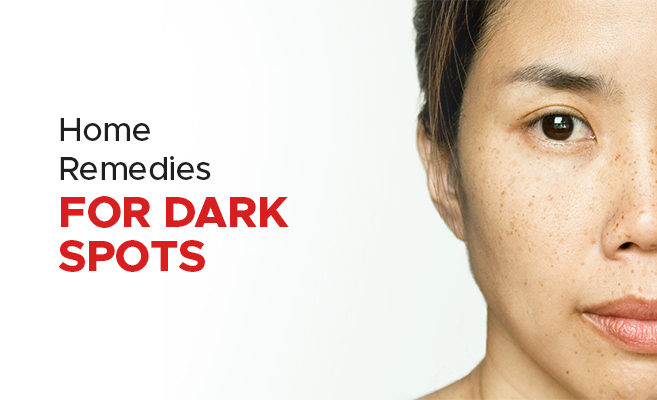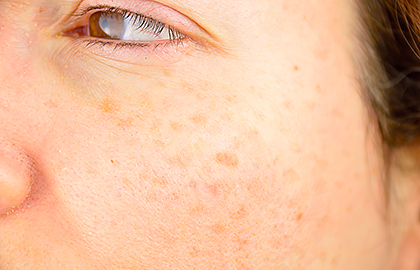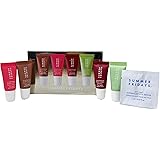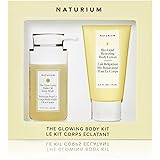Age spots on the face can be bothersome. They often appear as we get older.
But, there are ways to reduce them. Age spots, also known as liver spots or sun spots, are flat, brown, or black marks on the skin. They usually appear on areas exposed to the sun, like the face. While harmless, they can affect your confidence.
Fortunately, you can take steps to minimize them. This guide will explore effective methods to reduce age spots. From skincare routines to natural remedies, learn how to achieve a clearer complexion. Read on to discover practical tips for a more even skin tone.
Introduction To Age Spots
Age spots are a common skin concern. They usually appear on the face, hands, and other sun-exposed areas. These spots are harmless but can affect your appearance. Understanding age spots is the first step in reducing them.
What Are Age Spots?
Age spots, also known as liver spots or solar lentigines, are flat, dark areas on the skin. They vary in size and often appear on areas exposed to the sun. Age spots are most common in people over 50, but younger people can get them too.
Causes Of Age Spots
| Cause | Description |
|---|---|
| Sun Exposure | UV light speeds up melanin production, leading to age spots. |
| Aging | The skin’s ability to regenerate slows down, causing spots. |
| Genetics | Some people are more prone to age spots due to their genes. |
There are several factors that contribute to the formation of age spots. These include:
- Sun Exposure: Prolonged exposure to the sun’s UV rays is a major cause.
- Aging: As you age, your skin’s ability to regenerate decreases.
- Genetics: Your genes can make you more susceptible to age spots.
Understanding the causes can help you take steps to prevent and reduce age spots. Protecting your skin from the sun is crucial. Using sunscreen and wearing protective clothing can make a big difference.

Credit: psrihospital.com
Preventing Age Spots
Preventing age spots requires a bit of care and consistency. Age spots, also known as sun spots or liver spots, can appear due to prolonged sun exposure. By following a good skincare routine and protecting your skin from the sun, you can significantly reduce the appearance of age spots. Let’s explore how to keep your skin looking youthful and radiant.
Daily Skincare Routine
A daily skincare routine is crucial in preventing age spots. Start with a gentle cleanser to remove dirt and oil. This keeps your pores clear and your skin fresh. Follow up with a toner to balance your skin’s pH levels. Toners also help to minimize the appearance of pores.
Next, apply a serum with antioxidants. Antioxidants like Vitamin C protect the skin from damage and brighten your complexion. Moisturizing is the next step. Use a moisturizer suitable for your skin type. It keeps your skin hydrated and helps repair any damage.
Don’t forget to exfoliate once or twice a week. Exfoliation removes dead skin cells and promotes new cell growth. This step is important to keep your skin smooth and even-toned.
Sun Protection
Sun protection is key to preventing age spots. Always wear sunscreen with at least SPF 30. Apply it every day, even on cloudy days. Sunscreen protects your skin from harmful UV rays that cause age spots.
Wear a wide-brimmed hat and sunglasses when you’re outside. These accessories provide extra protection for your face and eyes. Try to stay in the shade during peak sun hours, usually between 10 AM and 4 PM.
Consider using makeup products with added SPF. This gives your skin an extra layer of protection. Reapply sunscreen every two hours if you are outside for long periods.
Topical Treatments
Age spots, also known as liver spots, are small, dark areas on the skin. They often appear on the face and hands. Topical treatments can help reduce these spots. These treatments are applied directly to the skin. They can lighten or remove age spots over time.
Over-the-counter Creams
Many over-the-counter creams can help lighten age spots. They contain ingredients like hydroquinone, retinol, or glycolic acid. These ingredients promote skin cell turnover. They help fade dark spots gradually.
Here is a table of common ingredients and their benefits:
| Ingredient | Benefit |
|---|---|
| Hydroquinone | Reduces melanin production |
| Retinol | Boosts cell turnover |
| Glycolic Acid | Exfoliates dead skin cells |
Apply these creams daily for the best results. Always follow the instructions on the package. Patience is key; results may take weeks to appear.
Prescription Medications
For stubborn age spots, prescription medications may be necessary. Dermatologists can prescribe stronger treatments. These often contain higher concentrations of active ingredients. Some common prescription treatments include:
- Tretinoin
- Stronger hydroquinone formulations
- Corticosteroids
These medications can be more effective. They also come with a higher risk of side effects. Consult your dermatologist for the best option. They can provide guidance on how to use these treatments safely.
Consistency is crucial for all topical treatments. Regular application helps achieve the best results. Protect your skin from the sun while using these treatments. Sun exposure can worsen age spots and reduce the effectiveness of treatments.
Natural Remedies
Age spots, also known as liver spots or sun spots, are common skin issues. They appear as small, dark areas on the skin, often on the face. While age spots are usually harmless, many seek ways to reduce their appearance. Natural remedies can be effective and gentle on the skin. Here are some proven natural solutions to help diminish age spots.
Aloe Vera
Aloe Vera is a popular natural remedy for various skin conditions. It has soothing and healing properties. The gel from the Aloe Vera plant can help lighten age spots. Apply Aloe Vera gel directly to the affected areas. Leave it on for about 30 minutes. Rinse with lukewarm water. Repeat this process daily for best results.
Apple Cider Vinegar
Apple Cider Vinegar is another effective natural remedy. It contains alpha hydroxy acids that can help lighten age spots. Mix equal parts of Apple Cider Vinegar and water. Apply the solution to the age spots using a cotton ball. Leave it on for a few minutes, then rinse with water. Use this remedy once daily until you see improvement.
Professional Treatments
Age spots can be a concern for many. While home remedies can help, sometimes professional treatments offer faster and more effective results. Below, we explore two popular professional treatments: chemical peels and laser therapy.
Chemical Peels
Chemical peels involve applying a solution to the skin. This solution causes the outer layer to exfoliate. New, smoother skin reveals itself beneath. Peels can vary in strength:
- Light Peels: Gentle and suitable for mild age spots. Recovery is quick.
- Medium Peels: Penetrates deeper. It targets more stubborn spots. Downtime is a bit longer.
- Deep Peels: For severe age spots. This option requires significant recovery time.
Consult with a dermatologist. They will recommend the best peel for your skin type and needs.
Laser Therapy
Laser therapy is another effective option. It uses focused light to target age spots. The laser breaks down melanin, which is then absorbed by the body.
There are different types of laser treatments:
- Ablative Lasers: Remove layers of skin. Effective but requires more recovery.
- Non-ablative Lasers: Stimulate collagen production. Less invasive with minimal downtime.
The number of sessions needed varies. It depends on the severity of the spots. Always consult a professional before starting laser therapy.
Diet And Lifestyle Changes
Diet and lifestyle changes play a significant role in reducing age spots on the face. A healthy diet can help your skin stay youthful and vibrant. Proper hydration and consuming antioxidant-rich foods are key components to achieving clear and even skin tone.
Antioxidant-rich Foods
Antioxidants protect your skin from damage. They neutralize harmful free radicals. Free radicals cause premature aging and age spots. Include foods rich in antioxidants in your diet.
Some examples are berries, nuts, and leafy greens. Blueberries, strawberries, and raspberries are excellent choices. Spinach and kale provide essential nutrients. Nuts like almonds and walnuts boost skin health.
Green tea is another powerful antioxidant source. Drink a cup daily for added benefits. Dark chocolate, in moderation, can also help. It is rich in flavonoids, which improve skin texture.
Hydration
Hydration is vital for healthy skin. It helps maintain skin elasticity. Drink at least eight glasses of water daily. Proper hydration flushes toxins from your body.
Eat water-rich foods like cucumbers and watermelons. These foods keep your skin hydrated from within. Avoid excessive caffeine and alcohol. They can dehydrate your skin and worsen age spots.
Use a hydrating moisturizer daily. It locks in moisture and keeps your skin soft. Choose products with hyaluronic acid for best results. Your skin will look fresh and glowing.
When To See A Dermatologist
Consult a dermatologist if age spots on your face persist despite using over-the-counter treatments. They can provide effective solutions for reducing these spots safely.
Age spots can be a cosmetic concern for many. While some people find success with at-home treatments, others may need professional help. Knowing when to see a dermatologist is key to achieving the best results.
Signs To Watch For
Certain signs indicate it is time to consult a dermatologist. These signs include:
- Age spots that change in size, shape, or color
- Spots that bleed, itch, or become painful
- New spots that appear suddenly and grow quickly
- Existing spots that look different from others on your skin
Monitoring these signs helps catch potential issues early. Early detection often leads to more effective treatments.
Consultation Process
Visiting a dermatologist involves a straightforward process. Here is what to expect:
| Step | Description |
|---|---|
| Initial Examination | The dermatologist examines your skin and spots. |
| Medical History | They ask about your medical history and skincare routine. |
| Diagnostic Tests | Tests may be done to rule out serious conditions. |
| Treatment Plan | The dermatologist suggests appropriate treatments. |
Initial Examination: The dermatologist will examine your skin and age spots. They will check for any unusual changes or signs of concern.
Medical History: The doctor will ask about your medical history and skincare routine. This helps in understanding the cause of the spots and planning the treatment.
Diagnostic Tests: Sometimes, tests are required to rule out serious conditions like skin cancer. These tests ensure that the spots are benign.
Treatment Plan: Based on the examination and tests, the dermatologist will recommend a treatment plan. Options might include topical treatments, laser therapy, or cryotherapy.
Seeing a dermatologist is a proactive step in managing age spots. It ensures you receive professional care tailored to your needs.
“`

Credit: www.aad.org
Maintaining Results
After working hard to reduce age spots on your face, it is vital to maintain the results. Consistent care and attention help keep your skin clear and healthy. This section will cover long-term skincare and follow-up treatments.
Long-term Skincare
Long-term skincare is essential for maintaining clear skin. Follow a daily skincare routine to keep age spots at bay. Here are some key steps:
- Cleansing: Use a gentle cleanser twice a day.
- Moisturizing: Apply a moisturizer suitable for your skin type.
- Sun Protection: Always use sunscreen with SPF 30 or higher.
- Exfoliation: Exfoliate your skin once or twice a week.
In addition to these steps, incorporate products with ingredients like vitamin C and retinoids. These help in reducing pigmentation and promoting skin renewal.
Follow-up Treatments
Regular follow-up treatments can enhance the results. Consider these options:
- Professional Facials: Get facials every 4-6 weeks to keep your skin glowing.
- Laser Treatments: Consult a dermatologist for laser treatments to target stubborn spots.
- Chemical Peels: Chemical peels can help exfoliate and rejuvenate the skin.
Follow your dermatologist’s advice on the frequency of these treatments. Regular check-ups help monitor your skin’s progress and adjust treatments as needed.
Maintaining clear skin requires commitment and consistency. Stick to your routine and consult professionals for the best results.
Frequently Asked Questions
What Causes Age Spots On The Face?
Age spots are caused by prolonged sun exposure. UV rays accelerate melanin production, leading to dark spots.
How Can I Prevent Age Spots?
Use sunscreen daily, wear protective clothing, and avoid peak sun hours to prevent age spots.
Are There Natural Remedies For Age Spots?
Yes, natural remedies like lemon juice, aloe vera, and apple cider vinegar can lighten age spots.
Can Age Spots Be Removed Permanently?
Yes, treatments like laser therapy, chemical peels, and cryotherapy can permanently remove age spots.
Conclusion
Age spots on the face can be reduced with consistent care. Use sunscreen daily to protect your skin. Try natural remedies like lemon juice for lightening spots. Over-the-counter creams can also help fade age spots. Consider professional treatments if results are slow.
Regular exfoliation removes dead skin cells, revealing fresher skin. Stay hydrated and eat a balanced diet for healthy skin. Consult a dermatologist for personalized advice. Reducing age spots takes time, but persistence pays off. Enjoy clearer, more radiant skin with these simple steps.

